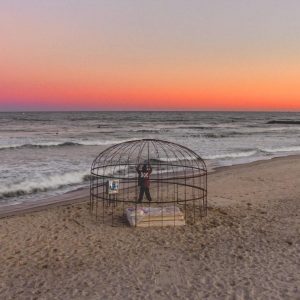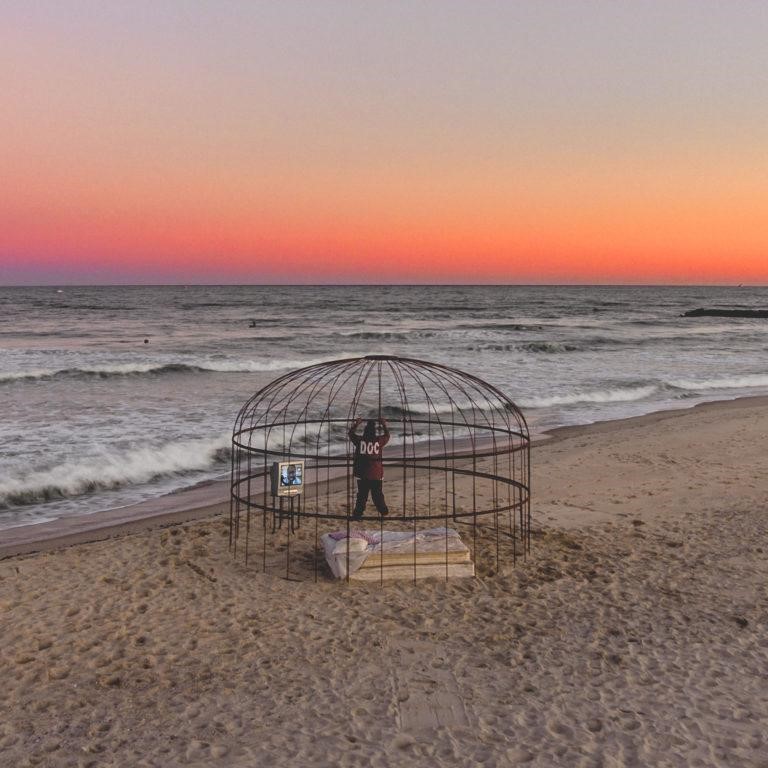My name is Katie Winters and I am a fourth-year Honours Sociology student. I have written my thesis as a content analysis of the multi-media project “Die Jim Crow”. I would like to thank my supervisor Dr. Tony Thomson for his intelligence and expertise. I have also been told at research conferences to thank my funders when presenting and discussing my topic. I have paid about $100 for my research out of my own pocket, so shout out to myself.
To set the stage for the project itself and its relevance, I believe it is imperative to first describe the scope of mass-incarceration in the United States. The land of the “free” is the land that incarcerates the highest rate of citizens per capita than any other country in the world. As of 2018, “the American criminal justice system holds almost 2.3 million people in 1,719 state prisons, 102 federal prisons, 1,852 juvenile correctional facilities, 3,163 local jails, and 80 Indian Country jails as well as in military prisons, immigration detention facilities, civil commitment centers, state psychiatric hospitals, and prisons in the U.S. territories” (Prisonpolicy.org, 2018). This epidemic of mass-incarceration targets specific groups, especially Black Americans. Although Black Americans account for approximately 12% of the United States’ general population, they account for approximately 38% of the United States’ prison population (Federal Bureau of Prisons, 2018). This is not because they commit more crime, but because they are more likely to be arrested, tried, and handed heavier sentences than their White peers. Depending on the state, a Black person is three to ten times more likely to be arrested than a White person for possession of marijuana (ACLU, 2017). Now that I have laid down the statistics so that people cannot come at me with the “facts don’t care about your feelings” garbage, I will explain what I found in my analysis of the very impressive multi-media project, “Die Jim Crow”.
To begin, I want to preface that I myself have never been incarcerate nor am I Black. I do not claim to understand these experiences or wish to exploit them, but I wish to use the privilege that has been afforded to me by my race and education to communicate the art and lived experiences from the talented, determined, and inspirational contributors of “Die Jim Crow”.
“Die Jim Crow” is a multi-media project that consists of six songs, one music video, and various examples of visual art compiled into a 200-page book. According to the website, the project is about the Black American experience in the era of mass-incarceration and it is the first ever album recorded in multiple United States’ prisons. The project and its title suggest that mass-incarceration is new form of Jim Crow segregation laws. Titles of the songs include: “My Name Be Jim Crow”, “A215-162”, “Tired and Weary”, “Plastic Bag”, “First Impressions”, and “Headed to the Streets”. I began by coding the lyrics of the songs for frequent themes. I compiled these themes into a word-cloud that included themes like: poverty, humiliation, racism, dehumanization, PTSD, and reintegration. These themes are clearly present in both the lyrics and in the literature that I reviewed. An example of powerful lyrics from “Headed to the Streets” that represents a variety of these themes reads as follows: “Another day another hope for a dolla/ I hit the pavement/ Been filling out 20 applications/ A day since I got out”, as well as the lines: “Society don’t trust you- they couldn’t get any leerier/ I’m tired from my struggle- I couldn’t get any wearier”. These lines are loaded with representations of themes like trouble with reintegration, poverty, stereotyping, and mental health struggles.
I was fortunate enough to have the opportunity to interview project founder Fury Young and lyricist and performer B.L. Shirelle. I asked Shirelle what her favourite imagery from the music video was and she mentioned the scene on the beach (pictured below).

She explained why this was her favourite imagery: “It just explains so much like how you feel when you’re not able to properly able to reintegrate. It’s like I’m out here, I’m free, I’m breathing the air. But it’s still like I’m locked the fuck up”. She explained what she meant by stating the following: “When I was locked up at least my mind was free. I could think, I could wonder, like do shit. Out here, I don’t even got that”.
In summary, this article does not even begin to scrape the surface of the complexities of mass-incarceration and the symbolism that lies within “Die Jim Crow”. I urge everyone reading to Google the project and see for yourself the talent and thought that goes into the project. My full thesis will be available for reading in the spring/summer months are The Vaughn Memorial Library, but please do not hesitate to ask me any questions before then.





